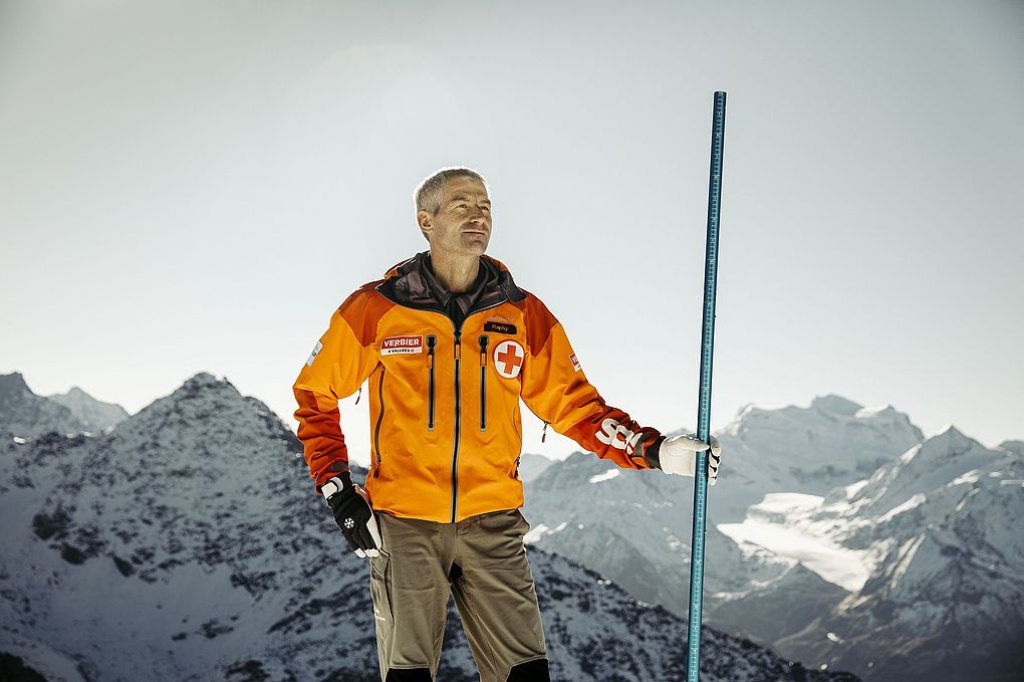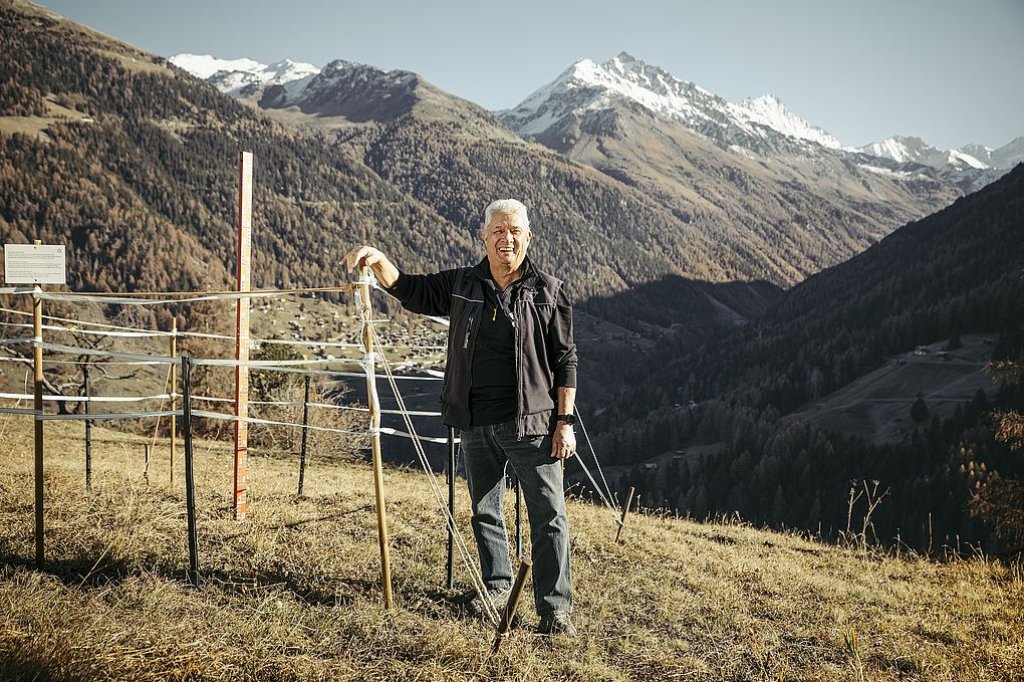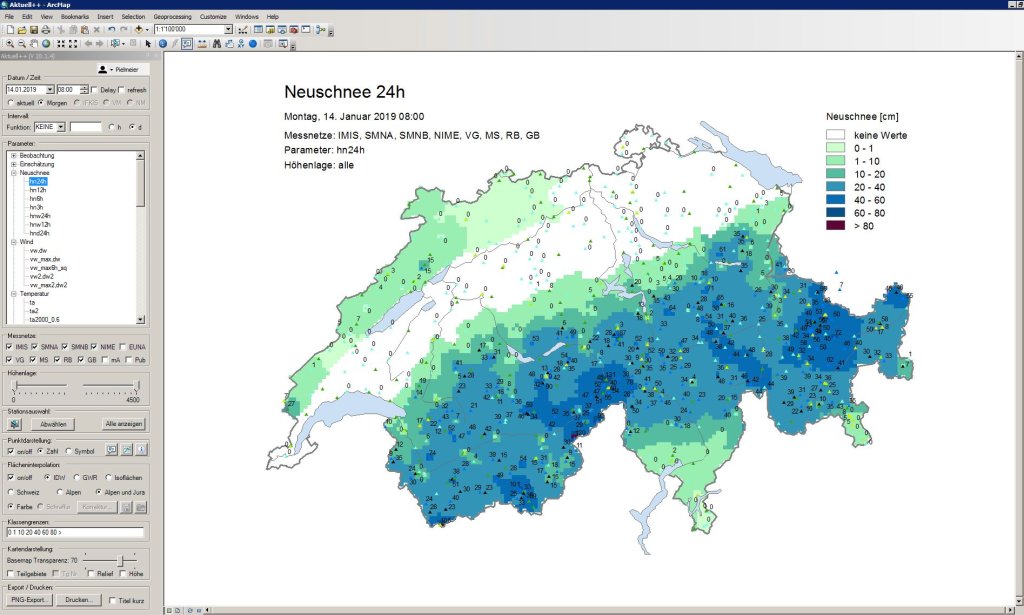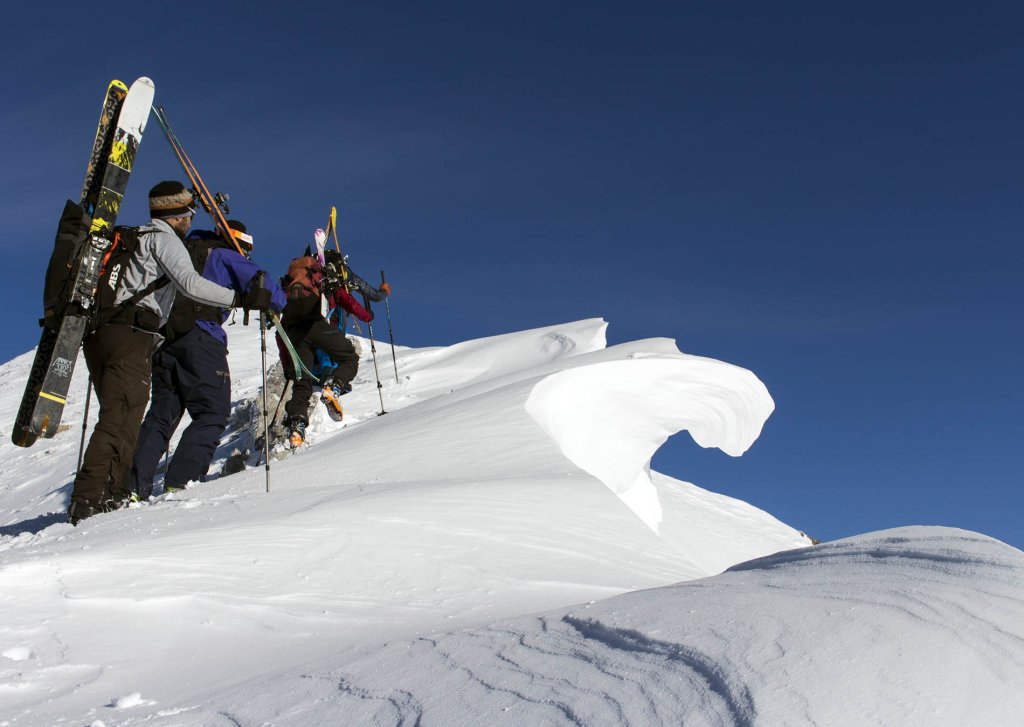The observers are trained by the SLF (PG was also allowed to take part in an observer workshop), report regularly and are compensated for their reports. They record data such as snow depth or amount of new snow, observed alarm signs and avalanches and often also make an assessment of the current avalanche danger. Some report from a specific location, usually their place of residence or work, which can be a ski resort, for example. Other SLF observers - for example those who work full-time as mountain guides - also move freely around the Swiss Alps. They report whenever they have interesting information from their respective locations.
In order to put faces to the observation data and the reported snow depths, we have teamed up with the SLF to present some of the observers in short interviews. In the first part, Raphy Troillet and Paul-André (called Paulon) have their say. Raphy is a carpenter, mountain guide and patroller in Verbier. He has been an SLF observer since 2014. Paulon has been there since 1973. He is retired and used to work in the piste and rescue service, as well as being a land registry holder for the municipality of Anniviers.
What exactly do you report as an observer?
Raphy: I take the snow measurements in the morning. I observe the weather and send the data to the SLF. During the day, I make observations on site (snow profiles, avalanches) and also transmit this data.
Paulon: Every day, I make observations and measurements on the snow field that is right in front of my house. I take snow measurements (height of fresh snow, snow depth, water equivalent of fresh snow if more than 10 cm falls, penetration depth of the pile driver) and observations (snow line, rain-snow line, avalanches, etc.).
How did you become an SLF observer?
Raphy: My predecessor also worked in the Verbier piste and rescue service, and I was his deputy. When he left his job in 2014, I took over his work as an observer.
Paulon: My father had been an observer since 1956. I took over when he died in 1973. I don't know how he became an observer, but I remember that back then, the coded notes were telegraphed to the SLF number 110 every morning.
What do you like about the job?
Raphy: I like understanding the snow and avalanches. It's fascinating to understand why and where avalanches happen and why sometimes nothing happens.
Paulon: I'm definitely obsessed with taking notes. So I would also take notes if I wasn't an observer for the SLF. That's why I really like the work.
What don't you like/what's tedious?
Raphy: When I have to dig a lot for a snow profile.
Paulon: Nothing really. It's a bit of a shame that we are now being replaced more and more by automatic stations. So we have to report on fewer and fewer parameters.
What does it mean to you to be an observer?
Raphy: It allows me to follow the development of the snowpack throughout the winter.
How well can you reconcile the job with your other activities?
Raphy: My work means I'm out in the field all day. This makes it easier for me to assess the avalanche danger on my ski tours.
Paulon: The observation work only takes me 10 minutes every morning. So I have no problem balancing this with my life. I think that any volunteer could do this job well.




